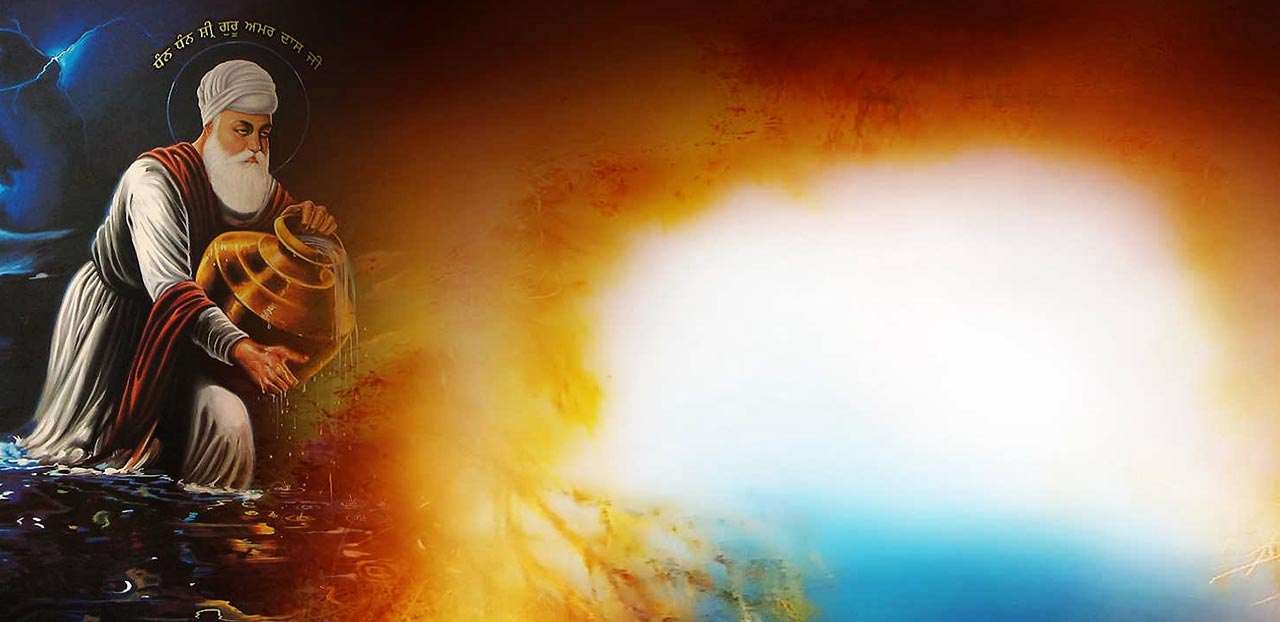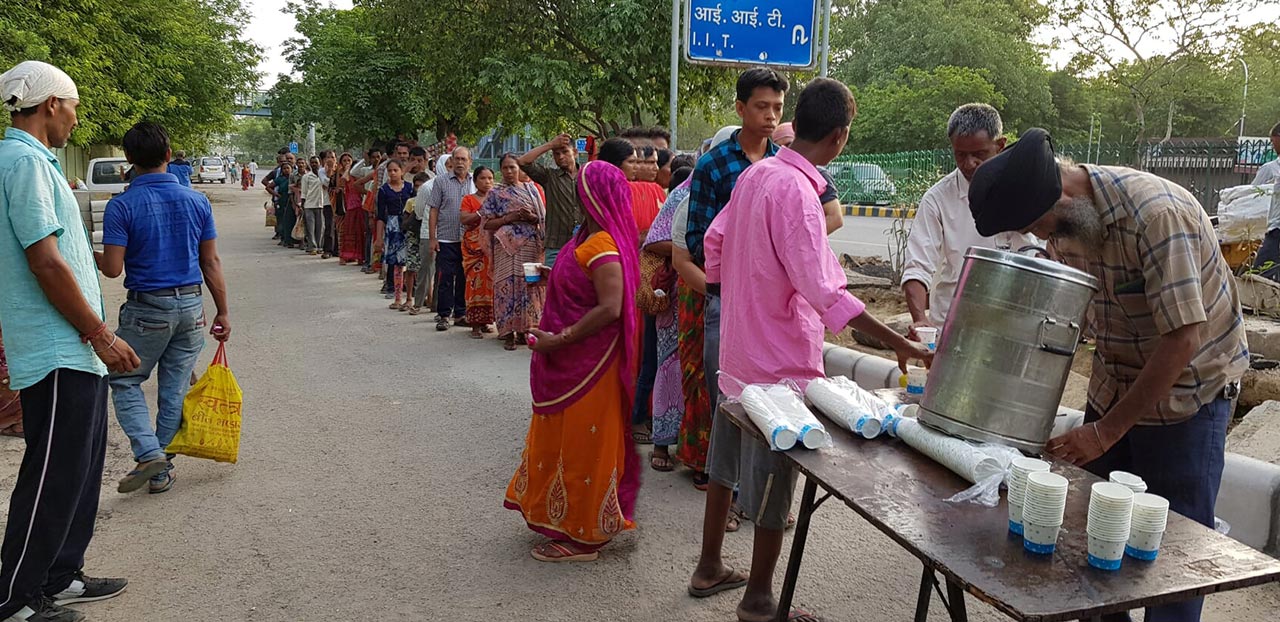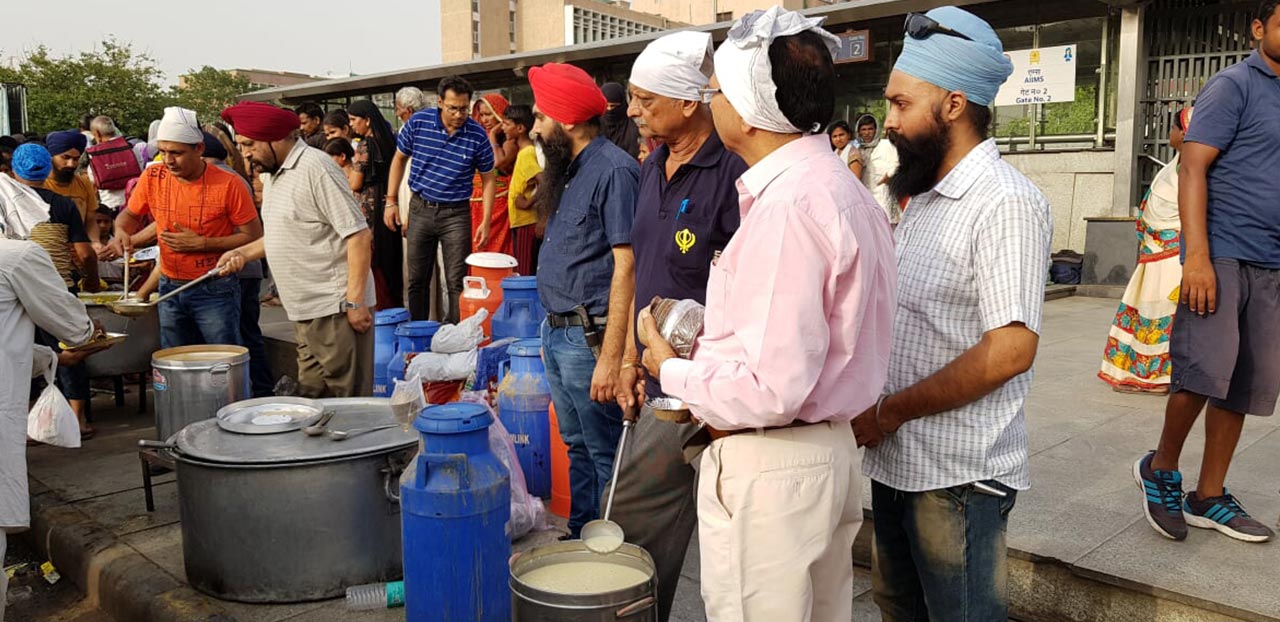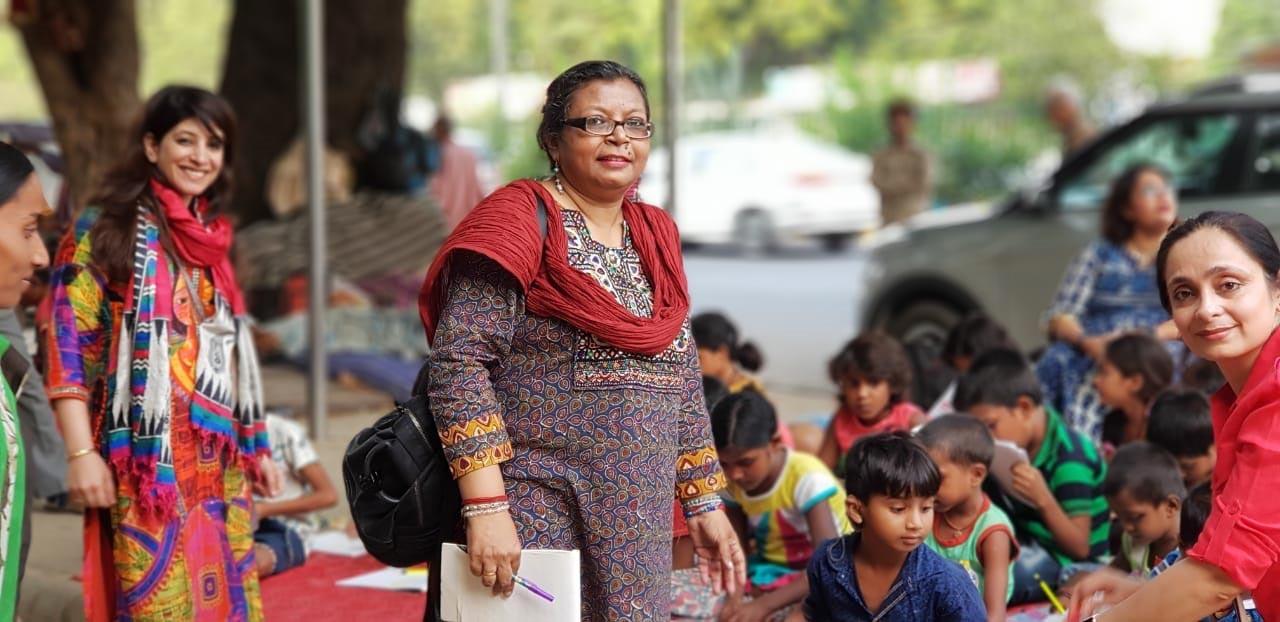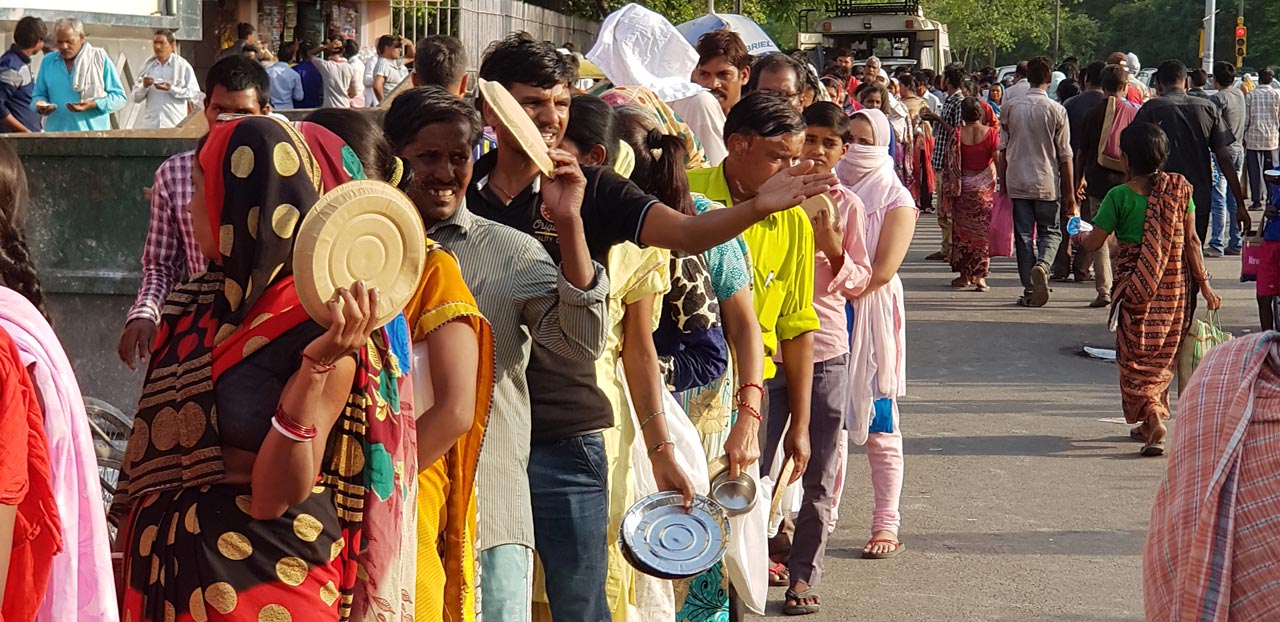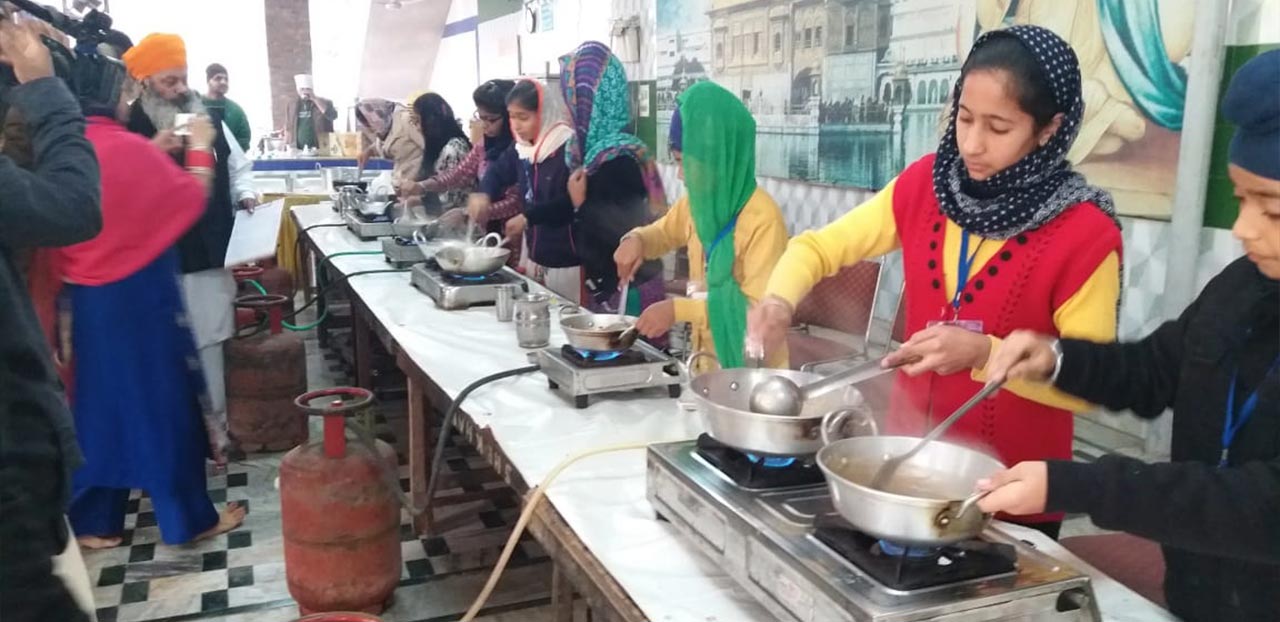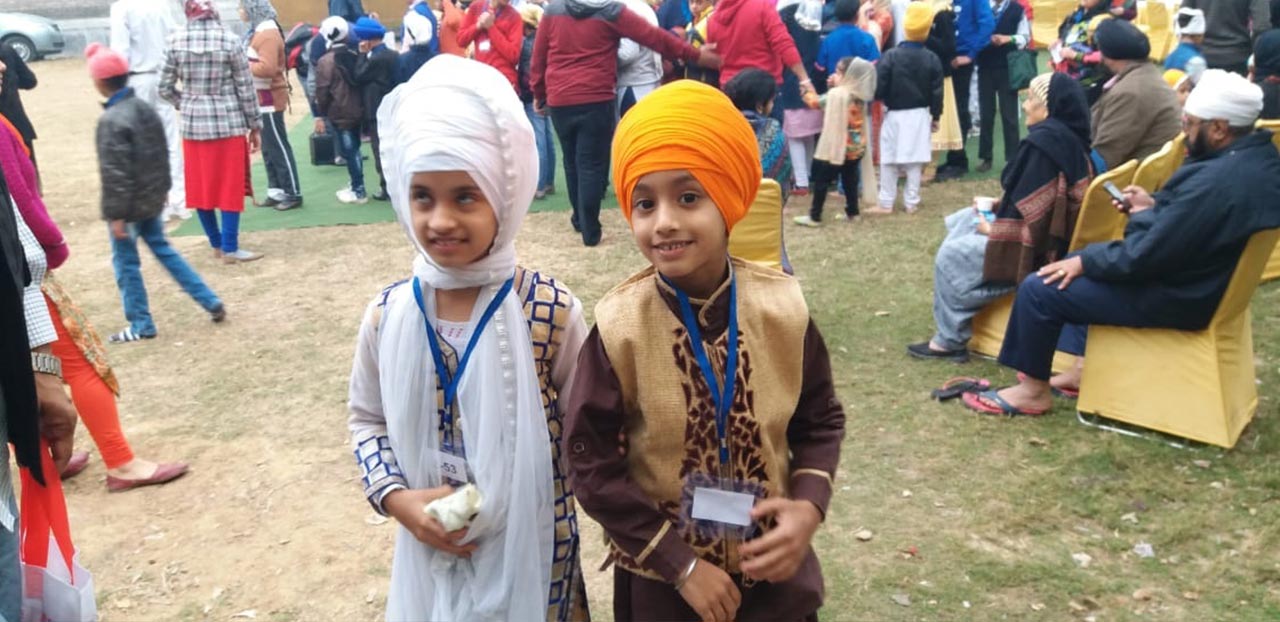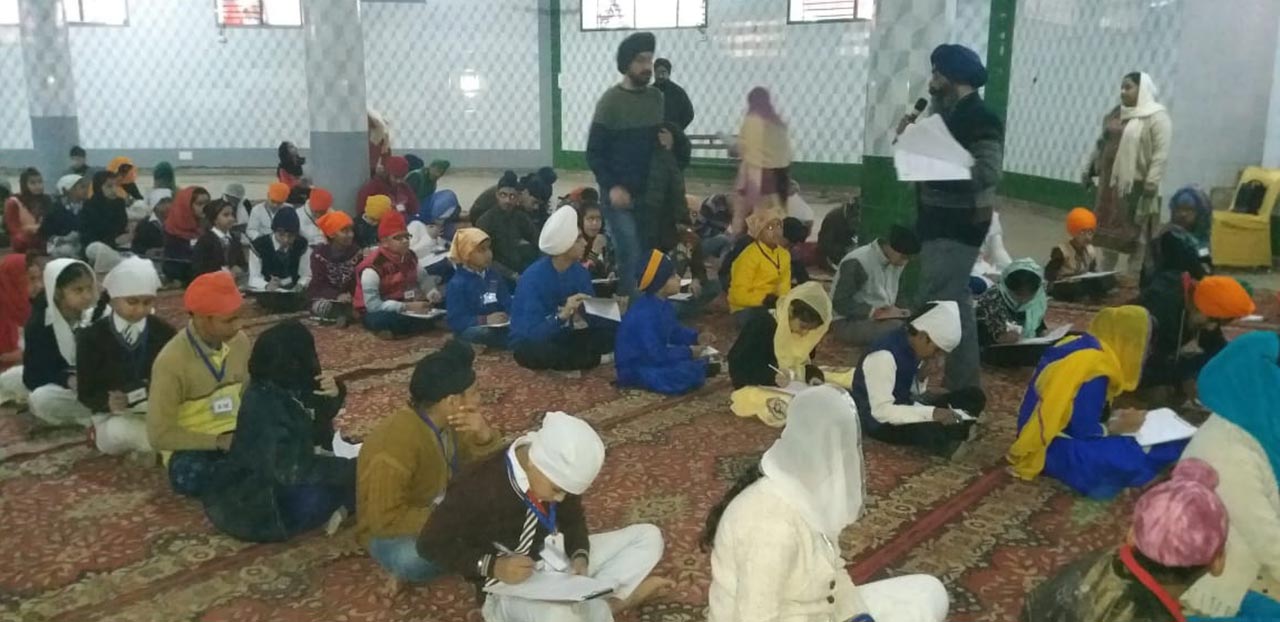Guru Amardas Ji is 3rd Guru of Sikhs. Guru Amar Das was born to mother Bakht Kaur and father Tej Bhan Bhalla on 5 May 1479 in Basarke village also known as Amritsar in Punjab (India). His wife was Mansa Devi and they had four children named Mohri Ji, Mohan Ji, Bibi Dani Ji and Bibi Bhani Ji. Amar Das ji was born in Hindu family and went of about twenty pilgrimages into the Himalayas, to Haridwar on river Ganges. In 1539, while on such a journey , he met a Hindu sadhu who asked him about his Guru. Amardas replied that he didn't have a Guru. The Sadhu then regretted to have company of nugura. This sadhu told Amardas that his day is ruined to have eaten with someone without a Guru. He asked Amardas to have a guru to attain enlightenment. Amar Das then took it seriously and started his search for a Puran (true) Guru. Time passed by but didn't found one. One day, in Amrit Vela (early morning), he heard his Daughter-in-law "Bibi Amro" singing a devotional shabad :
ਜੇ ਸਉ ਚੰਦਾ ਉਗਵਹਿ ਸੂਰਜ ਚੜਹਿ ਹਜਾਰ ॥ ਏਤੇ ਚਾਨਣ ਹੋਦਿਆਂ ਗੁਰ ਬਿਨੁ ਘੋਰ ਅੰਧਾਰ ॥੨॥
" If a hundred moons were to rise, and a thousand suns appeared, even with such light, there would still be pitch darkness without the Guru. ||2||"
Amardas felt true bliss in these lines. Bibi Amro was daughter of the Sikh Guru Angad. He learnt from her about Guru Angad, and with her help met the second Guru of Sikhism. He adopted him as his spiritual Guru who was much younger than his own age. He is famous in the Sikh tradition for his relentless service to Guru Angad, with legends about waking up in the early hours and fetching water for his Guru's bath, cleaning and cooking for the volunteers with the Guru, as well meditating daily routine.
Guru Angad named Amar Das his successor in 1552 making him 3rd Guru of sikhs. Guru Amardas left his physical form in 1574,
Guru Amar Das emphasised on practicing both spiritual and ethical paths on daily basis. He encouraged his followers to wake up before sunrise for their ablutions and meditation. He taught that true Sikh should have integrity, control over his senses, moderate diet, and to remain in good Sangat. He also emphasized on worship one formless God, make living on honest and hardwork earned income, not covet others' wealth and never slander others. He recommended holy devotion with Guru's image in his follower's heart. He was also a reformer, and discouraged veiling of women's faces (a Muslim custom) as well as sati (a Hindu custom).
Guru Amar Das started the tradition of appointing manji (zones of religious administration with an appointed chief called sangatias), introduced the dasvandh ("the tenth" of income) system of contributing 10th of income for social welfare. He was the one started famed langar tradition of Sikhism where anyone, without discrimination, could get free quality meal in a communal seating.
He also started and inaugurated the 84-level step well called Baoli Sahib at Goindval with a resting place, which then became a Sikh pilgrimage center.
Mughal emporer once came to meet Guru Amardas Ji. He neither received Akbar nor was Akbar directly ushered to him, rather the Guru suggested that Akbar like everyone sit on the floor and eat in the langar with everyone before their first meeting. Akbar, who sought to encourage tolerance and acceptance across religious lines, readily accepted the suggestion. The Sikh hagiographies called janam-sakhis mention that Guru Amar Das persuaded Akbar to repeal the "JAJIA" tax on non-muslim pilgrims.
Guru AmarDas Ji composed the rapturous hymn Anand Sahib in Ramkali Raga. Anand sahib is printed on pages 917 to 922 of the Holy Guru Grantha Sahib. Guru Amardas ji made it a as ritaul for Sikh marriage called "Anand Karaj", which literally means "blissful event". Anand Sahib is sung not only during Sikh weddings but also at major celebrations. 6 Pauries of "Anand Sahib" are read in Sikh temples (Gurdwara) every evening, Anad sahib is also read at naming of a Sikh baby, as well as during a Sikh funeral. The hymn celebrates the freedom from suffering and anxiety, the union of the soul with the divine, describing a devotee's bliss achieved through the Guru with inner devotion and by repeating the Name of the Creator. The hymn states in stanza 19 that "Name of one formless GOD is supreme" than all the Vedas, in stanza 27 that Smriti and Shastra discuss the good and the bad but are unreal because they lack a Guru and that it is the grace of the Guru which awakens the heart and the devotion to the Name. The hymn celebrates the life of a householder and constant inner devotion to the One, ending each stanza with the characteristic "says Nanak".
Guru Amar Das is also credited in the Sikh tradition to have encouraged building of places where Sikhs could gather together on festivals such as Maghi, Diwali and Vaisakhi. He required his disciples to gather together for prayers and communal celebrations in autumn for Diwali and in spring for Vaisakhi, both post harvest ancient festivals of India. Site of the Golden Temple Guru Amar Das selected the site in Amritsar village for a special temple, that Guru Ram Das began building, Guru Arjan completed and inaugurated, and the Sikh Emperor Ranjit Singh gilded. This temple has evolved into the contemporary "Harimandir Sahib", also known as the Golden Temple.
It is the most sacred pilgrimage site in Sikhism. Foundations and scripture Scholars such as Pashaura Singh, Louis E. Fenech and William McLeod state that Guru Amar Das was influential in introducing "distinctive features, pilgrimages, festivals and rituals" that ever since his time have been an integral part of Sikhism. Nearly 900 shabads composed by Guru Amar Das ji are present in in Adi Shri Guru Granth Sahib.
